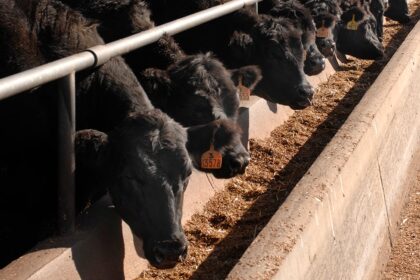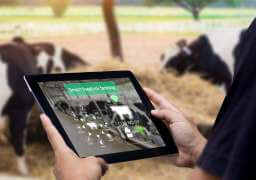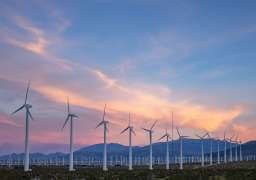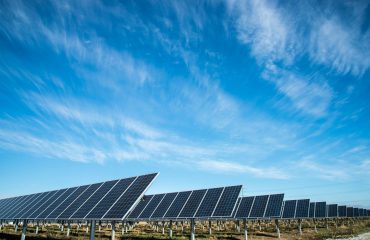When I first heard about Rangers Valley, I was intrigued. What makes it a standout name in the ...
The impacts of heat stress on feedlot cattle

Heat stress can have a significant impact on feedlot cattle, affecting their overall health, productivity, and welfare. Feedlot cattle are particularly vulnerable to heat stress due to the high-density conditions in which they are housed and the limited opportunities for natural cooling.
Physical Impacts
Here are some of the key impacts of heat stress on feedlot cattle:
- Reduced feed intake:
Heat stress negatively affects the appetite of cattle, leading to a decrease in feed intake. This can result in reduced weight gain and slower growth rates. Cattle may also exhibit selective eating, avoiding high-energy feeds, which further impairs their nutritional intake.
- Decreased weight gain:
Heat stress can cause a decline in weight gain and feed efficiency. Cattle divert energy towards thermoregulation for cooling their bodies, resulting in a reduced allocation of nutrients for growth and production. This can lead to economic losses for feedlot operators.
- Respiratory distress:
Heat stress increases respiration rates in cattle as they try to dissipate excess heat. Elevated respiratory rates can lead to respiratory distress, panting, and excessive salivation. Cattle may also experience increased water consumption to compensate for fluid loss through panting, further impacting their feed intake and nutrient utilization.
- Heat-related diseases:
Heat stress weakens the immune system of cattle, making them more susceptible to various diseases. Bacterial infections, respiratory diseases, and digestive disorders such as acidosis can become more prevalent in heat-stressed animals. These health issues can require veterinary intervention and lead to additional costs.
- Heat stroke and mortality:
In severe cases of heat stress, cattle can suffer from heat stroke, which is a life-threatening condition. Heat stroke occurs when the animal’s body temperature rises to critical levels, causing organ dysfunction and potentially leading to death. Mortality rates can increase during periods of extreme heat, especially if proper management and cooling strategies are not in place.
Consequently, heat stress in feedlot cattle can have both financial and animal welfare impacts. Here’s a breakdown of these impacts:
Financial Impacts:
- Reduced Average Daily Gain (ADG): Heat stress can decrease the feed intake and efficiency of cattle, leading to a reduction in ADG. This results in slower weight gain and increased feeding costs to achieve the desired market weight.
- Increased Feed Costs: Cattle consume more feed when experiencing heat stress as they try to dissipate body heat. This can lead to higher feed costs, affecting the profitability of feedlot operations.
- Decreased Carcass Quality: Heat-stressed cattle may experience reduced carcass quality, including decreased meat tenderness and marbling. This can result in lower carcass prices and financial losses for producers.
- Elevated Healthcare Expenses: Heat-stressed cattle are more susceptible to various health issues, such as respiratory problems, reduced immune function, and increased susceptibility to diseases. These conditions may require additional veterinary care and medication, adding to the financial burden.
- Market Volatility: Heat stress can disrupt the supply and demand dynamics of the cattle market. Reduced cattle performance and increased production costs due to heat stress can affect market timing and pricing strategies. Fluctuations in market prices can impact the profitability of feedlot operations, especially if the market is already experiencing volatility.
Animal Welfare Impacts:
- Heat-related Mortality: Extreme heat can lead to heat-related deaths in feedlot cattle, especially if proper measures to mitigate heat stress are not in place. This not only results in animal welfare concerns but also financial losses for the producer.
- Reduced Reproductive Performance: Heat stress negatively affects the reproductive performance of cattle, leading to decreased conception rates, increased embryonic loss, and lower fertility rates. This can have long-term implications on the sustainability of the herd.
- Behavioral Changes: Heat-stressed cattle exhibit behavioral changes, such as reduced activity, increased respiration rate, and seeking shade or water sources. These behavioral changes indicate discomfort and compromised welfare.
- Heat-Related Diseases: Heat stress weakens the immune system of cattle, making them more susceptible to various diseases, including respiratory illnesses and metabolic disorders. These conditions can lead to significant animal welfare concerns and require additional veterinary intervention.
Improving animal welfare in feedlot operations can contribute to better production outcomes and financial sustainability. By implementing measures to minimize heat stress and prioritize the well-being of feedlot cattle, feedlot operators can help mitigate both the financial and animal welfare impacts of heat stress.
To mitigate the impact of heat stress on feedlot cattle, several management practices can be implemented, that include provision of adequate shade areas in the form of cloth or roofed shelters, appropriate ventilation by fans or misting system, and sufficient water to prevent dehydration. Diet composition of the cattle often needs to be modified with increased fiber content and reduced heat-generating ingredients. Additional cooling methods, such as sprinkler systems or evaporative cooling pads can further abate heat. Furthermore, regular monitoring of weather conditions and cattle behavior, such as respiration rates and panting scores, can help identify periods of heightened risk and enable timely intervention.
By employing above mitigating tools and strategies, feedlot operators can effectively tackle the impacts of heat stress on cattle. For instance, the heat stress monitoring program allows producers to assess environmental conditions and identify periods of increased risk. This can involve monitoring temperature, humidity, and heat index levels. Proper training for feedlot employees is crucial to ensure they understand the signs of heat stress, appropriate management practices, and emergency protocols. Training should cover topics such as animal behavior, early detection of heat stress symptoms, and proper response procedures. Well-trained employees can proactively identify and manage heat stress situations, minimizing animal welfare risks and financial losses. Managing stocking density and pen design is important to reduce heat stress. Overcrowding can contribute to higher ambient temperatures and increase the risk of heat stress. Optimizing stocking density and designing pens to provide sufficient space for each animal to move, rest, and access shade is essential to minimize heat stress impacts.
References:
Brown-Brandl, T. M. (2013). Managing thermal stress in feedlot cattle: environment, animal susceptibility and management options from a US perspective. In Livestock housing: Modern management to ensure optimal health and welfare of farm animals (pp. 722-740). Wageningen Academic Publishers.
Brown-Brandl, T. M. (2018). Understanding heat stress in beef cattle. Revista Brasileira de Zootecnia, 47.
Chauhan, S. S., Rashamol, V. P., Bagath, M., Sejian, V., & Dunshea, F. R. (2021). Impacts of heat stress on immune responses and oxidative stress in farm animals and nutritional strategies for amelioration. International journal of biometeorology, 65, 1231-1244.
Davis, M. S., Mader, T. L., Holt, S. M., & Parkhurst, A. M. (2003). Strategies to reduce feedlot cattle heat stress: Effects on tympanic temperature. Journal of animal science, 81(3), 649-661.
Lees, A. M., Sejian, V., Wallage, A. L., Steel, C. C., Mader, T. L., Lees, J. C., & Gaughan, J. B. (2019). The impact of heat load on cattle. Animals, 9(6), 322.
Mader, T. L., & Davis, M. S. (2004). Effect of management strategies on reducing heat stress of feedlot cattle: feed and water intake. Journal of animal science, 82(10), 3077-3087.
Mader, T. L., Davis, M. S., & Brown-Brandl, T. (2006). Environmental factors influencing heat stress in feedlot cattle. Journal of animal science, 84(3), 712-719.
Maia, A. S., Moura, G. A., Fonsêca, V. F., Gebremedhin, K. G., Milan, H. M., Chiquitelli Neto, M., … & Pacheco, R. D. L. (2023). Economically sustainable shade design for feedlot cattle. Frontiers in Veterinary Science, 10, 1110671.
Summer, A., Lora, I., Formaggioni, P., & Gottardo, F. (2019). Impact of heat stress on milk and meat production. Animal Frontiers, 9(1), 39-46.
Unruh, E. M., Theurer, M. E., White, B. J., Larson, R. L., Drouillard, J. S., & Schrag, N. (2017). Evaluation of infrared thermography as a diagnostic tool to predict heat stress events in feedlot cattle. American journal of veterinary research, 78(7), 771-777.











